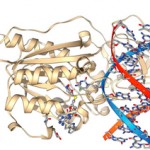 Patients with rheumatoid arthritis (RA) possess an immune system that attacks the joints, causing inflammation, pain and, eventually, tissue destruction. RA can be either seropositive or seronegative, with seropositive RA patients often presenting with more severe symptoms. Although rheumatologists assume pathological cellular immune responses occur in patients with seropositive RA, they have, until now, lacked a cellular marker that distinguishes between seropositive and seronegative populations.
Patients with rheumatoid arthritis (RA) possess an immune system that attacks the joints, causing inflammation, pain and, eventually, tissue destruction. RA can be either seropositive or seronegative, with seropositive RA patients often presenting with more severe symptoms. Although rheumatologists assume pathological cellular immune responses occur in patients with seropositive RA, they have, until now, lacked a cellular marker that distinguishes between seropositive and seronegative populations.
This month, Deepak A. Rao, MD, PhD, co-director of the Human Immunology Center at Brigham and Women’s Hospital (BWH) in Boston, and colleagues published their description of a newly identified subset of T cells, named peripheral helper (TPH) cells. These cells appear to work within the inflamed non-lymphoid tissues of patients with seropositive RA to promote pathological B cell responses and antibody production. The investigators used mass cytometry and RNA sequencing to perform a detailed analysis of this small population of cells found in the synovium of patients with seropositive RA. They published their results in the Feb. 2 issue of Nature.¹
Their transcriptome analysis revealed a population of PD-1hiCXCR5–CD4+ T cells (TPH) that had expanded in the joints of patients with seropositive RA. PD-1 is well known as an inhibitory receptor; although these cells expressed high levels of PD-1, they are not exhausted. Rather, the cells expressed factors that enable B cell help, including IL-21, CXCL13, ICOS and MAF.
“We’ve known for a long time that T cells and B cells infiltrate the synovium and contribute to inflammation in the joint,” explains Dr. Rao in an email to The Rheumatologist. “This study identifies a large population of T cells in the synovium that appears to drive the B cell response in the joint. Discovery of this population may allow us to develop new therapies that specifically target this pathologic T cell population, while sparing other protective T cells.”
TPH Cells in the Synovium
The TPH cells represent approximately one-quarter of the helper T cells found in RA joints. The researchers explain that the TPH cells are similar to PD-1hiCXCR5+ T follicular helper cells in that they induce plasma cell differentiation in vitro via IL-21 excretion and SLAMF5 interaction. A closer analysis of the transcriptome of the novel TPH population revealed, however, that TPH and T follicular helper cells differ in expression of BCL6 and BLIMP1.
“There’s a general sense among rheumatologists that seropositive RA behaves differently from seronegative RA,” elaborates Dr. Rao. “The specific enrichment of TPH cells in seropositive RA samples and not other inflammatory arthritides (i.e., seronegative RA, psoriatic arthritis, juvenile arthritis) is really striking.”

